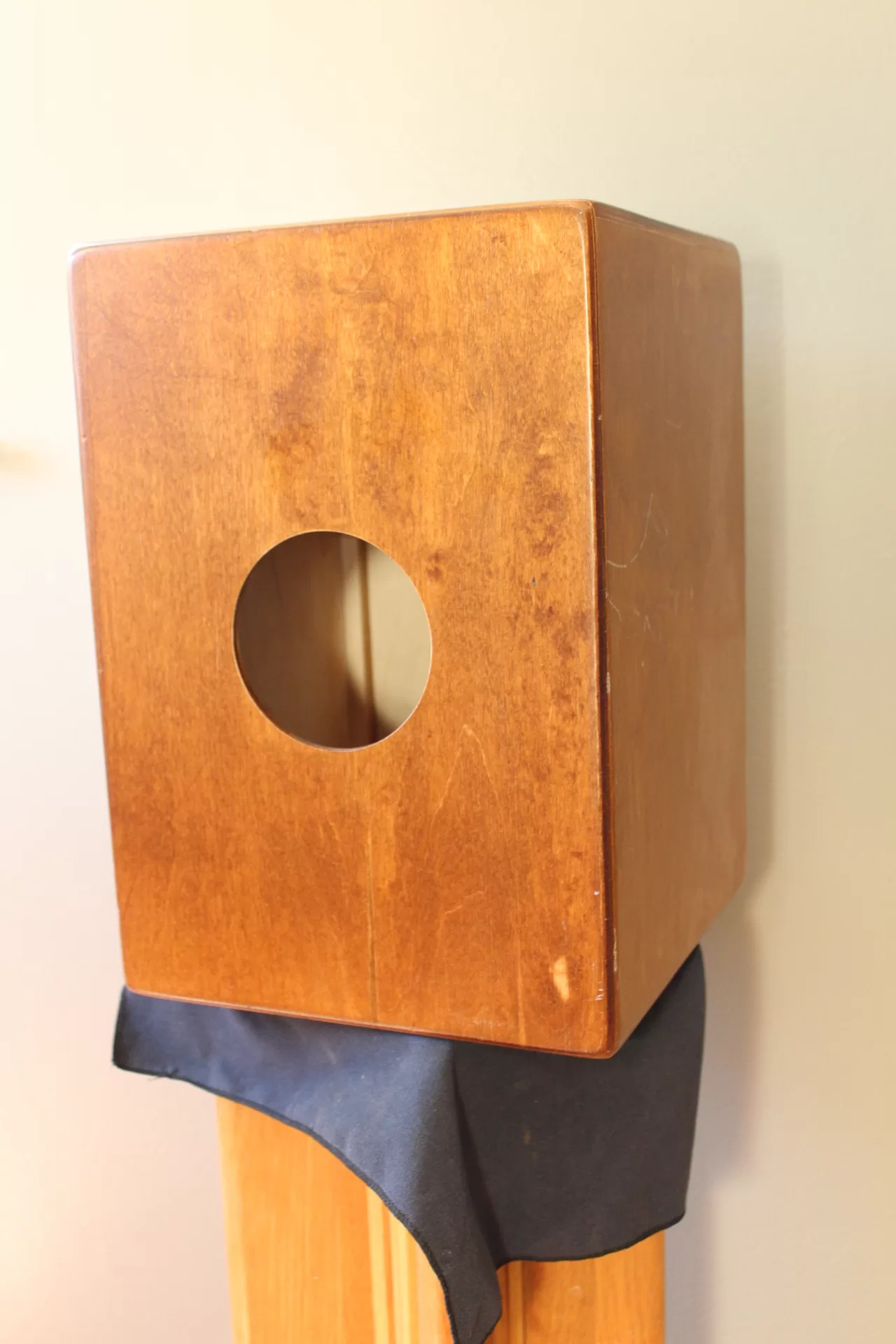A cajon (pronounced ka-HON) is a percussion instrument originating from Peru that has gained popularity worldwide. Here are its key features and aspects:
Construction:
- The cajon is essentially a box-shaped drum, traditionally made from wood, with a thin front plate (playing surface).
- It typically has a sound hole on the back or one of the sides to allow air to escape, enhancing the instrument’s resonance.
Playing Technique:
- To play the cajon, a musician sits on top of it and strikes the front plate with their hands, fingers, or occasionally with brushes or mallets.
- Different parts of the front plate produce various sounds and tones, allowing for a range of rhythmic patterns and dynamics.
Sound:
- The cajon produces a deep, resonant bass tone when struck near the center of the front plate.
- Slaps and taps on the edges or corners of the plate produce higher-pitched tones and sharper sounds.
- The instrument’s sound can be modified by adjusting playing technique, hand position, and the intensity of the strikes.
Cultural Significance:
- The cajon has its roots in Afro-Peruvian music traditions, particularly in the coastal regions of Peru.
- It was originally played as a percussion instrument accompanying Afro-Peruvian dances and music, but it has since been adopted in various musical genres worldwide, including flamenco, jazz, world music, and pop.
Modern Variations:
- Modern cajons may include adjustable snare wires inside the box to create a buzzing sound, similar to a snare drum.
- Some cajons feature additional accessories or modifications to enhance sound projection, comfort, and versatility.
Overall, the cajon’s versatility, portability, and expressive sound have made it a popular choice among percussionists and musicians globally, contributing to its widespread adoption in diverse musical contexts and genres.
